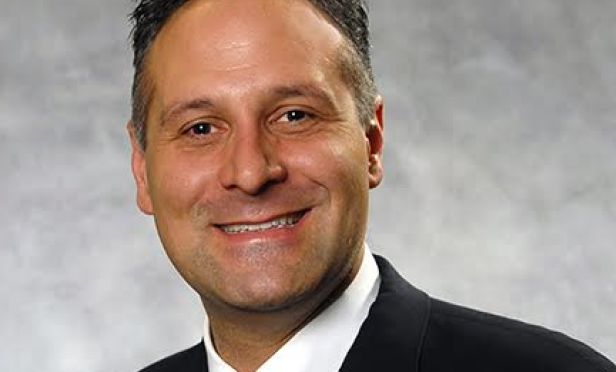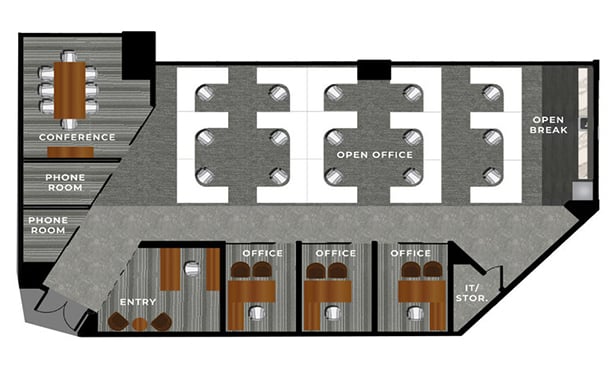
MIAMI—The skilled labor shortage is clearly impacting construction in Florida. A recent report by the Associated General Contractors found that 68% of Florida construction firms are having difficulty hiring skilled employees, a finding that's raising the stakes for the industry and companies in the real estate space. How should developers respond?
GlobeSt.com caught up with Skanska USA's executive vice president and general manager for Florida, Fred Hames, to discuss this and related issues in part two of this exclusive interview series. You can still read part one: The Real Impact of the Construction Labor Crunch.
GlobeSt.com: Should developers anticipate rising construction costs over the coming year?
Hames: As is typically the case in Florida, it's supply and demand—not the skilled labor shortage—that's driving construction pricing. When residential development heats up across the state, we often find pricing for raw materials, finished products and labor rise.
Large contractors that maintain steady project volume regardless of market conditions, such as Skanska, have a leg up because we have deep pools of subcontractor talent to fill the supply chain gap. We're beginning to see residential development level-off in Florida's major markets, but all signs indicate that demand for commercial development is mounting, which should result in prices remaining stable over the next few years.
GlobeSt.com: What types of positions tend to be in highest demand, and why?
Hames: The greatest need is at the high-skill levels of our trade—project supervisors, electricians, pipe fitters, sheet metal and alarm system specialists, and mechanics. These are skills that are learned over time and require technical training in specialized programs.
There's been a significant drop-off in the number of students enrolling in these programs, but we're beginning to see signs of heightened interest in pursuing construction careers. Case in point: at Skanska, we sponsor an ACE mentorship program designed for graduating high school students who choose to forego college in favor of working in the field. This year alone, we've hosted more than 35 interns in Florida who are training for long-term careers.

MIAMI—The skilled labor shortage is clearly impacting construction in Florida. A recent report by the Associated General Contractors found that 68% of Florida construction firms are having difficulty hiring skilled employees, a finding that's raising the stakes for the industry and companies in the real estate space. How should developers respond?
GlobeSt.com caught up with Skanska USA's executive vice president and general manager for Florida, Fred Hames, to discuss this and related issues in part two of this exclusive interview series. You can still read part one: The Real Impact of the Construction Labor Crunch.
GlobeSt.com: Should developers anticipate rising construction costs over the coming year?
Hames: As is typically the case in Florida, it's supply and demand—not the skilled labor shortage—that's driving construction pricing. When residential development heats up across the state, we often find pricing for raw materials, finished products and labor rise.
Large contractors that maintain steady project volume regardless of market conditions, such as Skanska, have a leg up because we have deep pools of subcontractor talent to fill the supply chain gap. We're beginning to see residential development level-off in Florida's major markets, but all signs indicate that demand for commercial development is mounting, which should result in prices remaining stable over the next few years.
GlobeSt.com: What types of positions tend to be in highest demand, and why?
Hames: The greatest need is at the high-skill levels of our trade—project supervisors, electricians, pipe fitters, sheet metal and alarm system specialists, and mechanics. These are skills that are learned over time and require technical training in specialized programs.
There's been a significant drop-off in the number of students enrolling in these programs, but we're beginning to see signs of heightened interest in pursuing construction careers. Case in point: at Skanska, we sponsor an ACE mentorship program designed for graduating high school students who choose to forego college in favor of working in the field. This year alone, we've hosted more than 35 interns in Florida who are training for long-term careers.
Want to continue reading?
Become a Free ALM Digital Reader.
Once you are an ALM Digital Member, you’ll receive:
- Breaking commercial real estate news and analysis, on-site and via our newsletters and custom alerts
- Educational webcasts, white papers, and ebooks from industry thought leaders
- Critical coverage of the property casualty insurance and financial advisory markets on our other ALM sites, PropertyCasualty360 and ThinkAdvisor
Already have an account? Sign In Now
*May exclude premium content© 2025 ALM Global, LLC, All Rights Reserved. Request academic re-use from www.copyright.com. All other uses, submit a request to [email protected]. For more information visit Asset & Logo Licensing.








